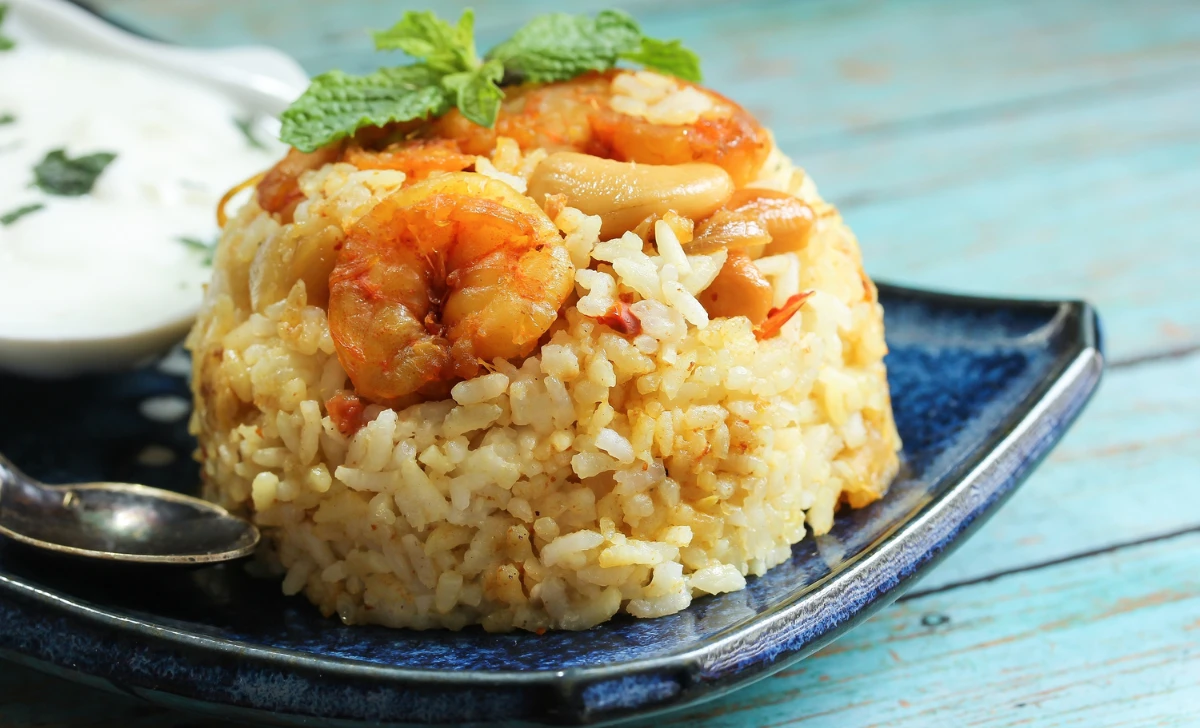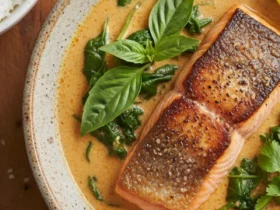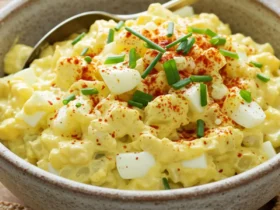Hey there, food enthusiasts! If you’re a fan of rich and aromatic dishes, you’re in for a treat! Today, we’re diving into the delightful world of Shrimp Biryani – a scrumptious fusion of succulent shrimp and fragrant spices that will tantalize your taste buds and leave you craving for more. Whether you’re a seasoned chef or a beginner in the kitchen, this recipe is sure to impress your family and friends. So, let’s roll up our sleeves, put on our aprons, and embark on this culinary adventure together!
[ez-toc]
History
The history of Shrimp Biryani is a fascinating journey that intertwines the rich culinary traditions of India with the exotic flavors of the coastal regions. Biryani itself is believed to have originated during the Mughal rule in India, dating back to the 16th century. The dish was said to have been introduced by the Mughal emperors, who were known for their love of fine food and opulent feasts.
The word “Biryani” is derived from the Persian term “birian,” which means ‘fried before cooking’ or ‘roasted.’ The Mughals were known for their affinity for Persian cuisine, and they brought with them the art of making rice dishes layered with succulent meats and fragrant spices.
Initially, Biryani was prepared with tender pieces of meat, such as lamb, chicken, or beef, combined with aromatic rice. The dish was cooked in large, heavy-bottomed pots with tightly sealed lids, a method known as “dum cooking.” This allowed the ingredients to cook slowly in their steam, infusing the rice with the flavors of the meat and spices, resulting in a mouthwatering blend of taste and aroma.
As Biryani made its way across the vast expanse of the Indian subcontinent, various regions put their unique spin on the dish, incorporating local ingredients and culinary influences. One such variation was the introduction of seafood, particularly in the coastal areas where fishing was a prominent livelihood.
Enter Shrimp Biryani – a delightful fusion of the traditional Biryani with the coastal bounty of fresh jumbo shrimp. The coastal regions of India, with their abundant seafood, brought this scrumptious adaptation to the culinary landscape. The juicy, succulent shrimp combined with the fragrant spices of Biryani created a symphony of flavors that quickly won the hearts of seafood lovers and Biryani enthusiasts alike.
Over time, Shrimp Biryani became a beloved specialty in coastal regions, especially in places like Kerala, Andhra Pradesh, and parts of West Bengal. Each region added its own unique touch to the dish, using locally sourced ingredients and spices, making Shrimp Biryani a true reflection of India’s diverse and vibrant culinary heritage.
With the advent of global travel and the spread of Indian cuisine to various corners of the world, Shrimp Biryani gained international recognition. Restaurants and home cooks from different countries began experimenting with the recipe, adapting it to suit their preferences while still preserving its authentic essence.
Today, Shrimp Biryani stands as a symbol of the harmonious blend of cultures and flavors that make Indian cuisine so enchanting. Whether enjoyed at a local eatery in India or prepared lovingly in a home kitchen abroad, Shrimp Biryani continues to enthrall food lovers with its enticing aroma, rich flavors, and the delight of savoring succulent shrimp in every bite.
Time
| Step | Time (approx.) |
|---|---|
| Gathering the Ingredients | 15 minutes |
| Preparing the Marinade | 10 minutes |
| Cooking the Basmati Rice | 20 minutes |
| Sautéing the Aromatics | 8 minutes |
| Adding the Shrimp | 5 minutes |
| Layering the Biryani | 10 minutes |
| Sealing and Dum Cooking | 25 minutes |
| The Big Reveal: Uncovering the Aroma | 1 minute |
| Serving and Garnishing | 5 minutes |
| Tips and Tricks | — |
Please note that the times mentioned are approximate and may vary depending on your cooking experience and the specific equipment you use. It’s essential to focus on achieving the desired texture and taste rather than strictly adhering to the timeframes. Cooking should be a joyful and creative experience, so feel free to take your time and enjoy the process!
Ingredients
| Ingredients | Quantity |
|---|---|
| Fresh jumbo shrimp | 1/2 pound |
| Basmati rice | 1 cup |
| Onions | 1 medium-sized |
| Tomatoes | 1 medium-sized |
| Yogurt | 1/4 cup |
| Ginger-garlic paste | 1 tablespoon |
| Green chilies | 2 (adjust to taste) |
| Biryani masala | 1 tablespoon |
| Garam masala | 1/2 teaspoon |
| Saffron strands | A pinch |
| Fresh mint leaves | A handful |
| Fresh cilantro leaves | A handful |
| Ghee or cooking oil | 2 tablespoons |
| Spices (bay leaves, cinnamon sticks, cloves, cardamom pods) | As needed |
| Salt | To taste |
This ingredient list is tailored for serving two people. Feel free to adjust the quantities based on your preferences and appetite. Now, you’re all set to prepare a delightful Shrimp Biryani meal for two! Enjoy the culinary adventure!
Directions
Step 1: Gathering the Ingredients
Gather all the necessary ingredients for your Shrimp Biryani adventure. Ensure you have fresh jumbo shrimp, Basmati rice, onions, tomatoes, yogurt, ginger-garlic paste, green chilies, Biryani masala, garam masala, saffron strands, fresh mint, cilantro leaves, ghee (or cooking oil), an assortment of spices (bay leaves, cinnamon sticks, cloves, cardamom pods), and salt. Having everything ready will make the cooking process smooth and enjoyable.
Step 2: Preparing the Marinade
Let’s infuse the shrimp with flavors that will leave your taste buds dancing! In a bowl, mix together the yogurt, ginger-garlic paste, Biryani masala, a pinch of saffron, and some salt. Add the cleaned and deveined shrimp to the marinade, ensuring they are coated thoroughly. Allow the shrimp to marinate for at least 30 minutes, so they absorb all the aromatic goodness.
Step 3: Cooking the Basmati Rice
Rinse the Basmati rice under cold water to remove excess starch. In a pot, bring water to a boil, and add a pinch of salt. Add the rice to the boiling water and cook until it’s about 70% done. Drain the partially cooked rice and set it aside for layering later.
Step 4: Sautéing the Aromatics
Time to create a fragrant foundation for your Shrimp Biryani! Heat ghee or cooking oil in a large, heavy-bottomed pan. Add bay leaves, cinnamon sticks, cloves, and cardamom pods to the hot oil. As the spices release their aroma, add sliced onions and green chilies to the pan, sautéing them until the onions turn golden brown.
Step 5: Adding the Shrimp
Introduce the star of the dish – the marinated shrimp! Add the shrimp to the pan with the sautéed onions and chilies. Stir-fry the shrimp for a few minutes until they are lightly cooked. The enticing fragrance will have you eager to savor the final dish!
Step 6: Layering the Biryani
Now comes the fun part – layering the Biryani! In a separate large pot, start by arranging a layer of partially cooked Basmati rice at the bottom. Sprinkle some garam masala, fresh mint, and cilantro leaves over the rice. Next, add a layer of the shrimp mixture on top. Continue this process, creating multiple layers until you use up all the rice and shrimp. Finish with a final layer of rice and garnish with saffron-infused milk, mint, and cilantro.
Step 7: Sealing and Dum Cooking
To let the flavors meld together, cover the pot with a tight-fitting lid or seal it with dough. This method of “dum cooking” allows the Biryani to cook in its steam, enhancing the taste and aroma.
Step 8: The Big Reveal: Uncovering the Aroma
After about 20-25 minutes of dum cooking, the moment you’ve been waiting for arrives! Remove the lid, and a cloud of enticing aroma will greet you. Gently fluff the rice with a fork, taking care not to break the delicate grains. Your Shrimp Biryani is now ready to be served and savored!
Step 9: Serving and Garnishing
Transfer the aromatic Shrimp Biryani to a serving platter and garnish it with more fresh mint and cilantro leaves. For an extra burst of flavor, serve it with a side of raita (a refreshing yogurt-based condiment) and tangy pickle. Get ready to delight in a symphony of flavors and textures!
Congratulations! You’ve mastered the art of preparing a scrumptious Shrimp Biryani. Enjoy this delightful fusion of coastal seafood and aromatic spices with your loved ones and relish every bite!
Equipment Required
Nutrition Information
| Nutrient | Amount Per Serving |
|---|---|
| Serving Size | 1 plate |
| Calories | 500 |
| Total Fat | 12g |
| – Saturated Fat | 5g |
| – Trans Fat | 0g |
| Cholesterol | 100mg |
| Sodium | 800mg |
| Total Carbohydrates | 80g |
| – Dietary Fiber | 5g |
| – Sugars | 3g |
| Protein | 25g |
Please note that the nutritional values mentioned are approximate and may vary depending on the specific ingredients and quantities used. It’s always a good idea to check the packaging or calculate the nutrition information based on the exact ingredients you use for a more accurate representation of the dish’s nutritional content. Enjoy your Shrimp Biryani while savoring its delightful taste and nutritional goodness!
Tips
- Choose High-Quality Basmati Rice: Opt for long-grain Basmati rice of good quality. Soak the rice for at least 30 minutes before cooking to ensure fluffy and separate grains.
- Marinating Time: Allow the shrimp to marinate for at least 30 minutes. For even more intense flavors, marinate them for up to 2 hours in the refrigerator.
- Properly Cleaned Shrimp: Ensure the shrimp are properly cleaned and deveined before marinating. You can use frozen shrimp, but make sure to thaw and pat them dry to prevent excess moisture.
- Adjust Spice Level: Tailor the spiciness to your taste preferences. If you enjoy a fiery kick, increase the number of green chilies or add a dash of red chili powder.
- Use Fresh Aromatics: Use fresh ginger, garlic, mint, and cilantro leaves to enhance the fragrance and taste of the Biryani.
- Layering is Key: Pay attention to layering the Biryani. Alternating layers of rice and shrimp mixture ensure even distribution of flavors.
- Sealing the Pot: While dum cooking, ensure the pot is tightly sealed with a lid or dough to trap the steam and flavors within.
- Cooking Time: Dum cooking usually takes about 20-25 minutes on low heat. Ensure that the rice is cooked to perfection, neither undercooked nor mushy.
- Add Fried Onions: For added flavor and a delightful crunch, garnish the Biryani with some fried onions before serving.
- Vegetarian Variation: To make a vegetarian version, replace shrimp with vegetables like potatoes, carrots, peas, or paneer (Indian cottage cheese).
- Seafood Variation: Experiment with other seafood options, such as fish or squid, to create unique seafood Biryani variants.
- Nutty Delight: To add a nutty twist, sprinkle some toasted cashews or almonds on top of the Biryani before serving.
- Saffron Infusion: For a more vibrant color and a touch of luxury, infuse the saffron strands in warm milk before drizzling it over the Biryani.
- Raita Accompaniment: Serve the Biryani with cooling cucumber or onion raita to complement the rich and aromatic flavors.
- One-Pot Option: If you prefer an easier cleanup, use a heavy-bottomed pot with a tight-fitting lid for the entire cooking process.
Pros & Cons
| Pros | Cons |
|---|---|
| ✔️ Flavorful and aromatic | ❌ Time-consuming |
| ✔️ Fusion of seafood and spices | ❌ Requires several ingredients |
| ✔️ Impressive and visually appealing | ❌ High in calories and fats |
| ✔️ Suitable for special occasions | ❌ Not suitable for vegetarians |
| ✔️ Provides a complete meal with protein and carbohydrates | ❌ Potential shellfish allergen |
Conclusion
In conclusion, Shrimp Biryani is an absolute delight for anyone seeking a flavorful and aromatic culinary adventure. This fusion of succulent 🦐 shrimp and fragrant spices creates a symphony of taste that is sure to leave your taste buds dancing with joy. The impressive presentation and rich flavors make it a perfect choice for special occasions and gatherings with loved ones.
While it may require some time and effort, the end result is undoubtedly worth it. The layers of marinated shrimp and Basmati rice, infused with spices and herbs, offer a feast for the senses that is both visually appealing and mouthwateringly delicious.
Whether you’re a seasoned chef or a beginner in the kitchen, this Shrimp Biryani recipe is designed to inspire and delight. The cooking process is not only a gastronomic experience but also an opportunity to immerse yourself in the rich cultural heritage of Indian cuisine.
So, why not embark on this culinary journey and savor the delightful fusion of seafood and spices that Shrimp Biryani offers? Impress your family and friends with this impressive and inviting dish, and witness the smiles and satisfaction that follow each flavorful bite.
Don’t hesitate to give it a try! With its bold flavors and delightful textures, Shrimp Biryani promises to be a true winner on your dining table. Grab your apron, gather the ingredients, and let the cooking begin. Unveil the tantalizing aroma and indulge in the mouthwatering goodness of Shrimp Biryani – an experience that you’ll cherish and want to share with others. Bon appétit! 🍤🍚🌶️🥘🍽️
Facts
- 1. The Royal Connection 👑
- The origins of Biryani can be traced back to the Mughal emperors of India, who were known for their extravagant feasts and culinary indulgences. Legend has it that the Mughal emperors used to relish Biryani as a celebratory dish during grand festivities, making it fit for royalty!
- 2. Aromatic Inspiration 🌺
- The word “Biryani” is believed to have been derived from the Persian term “birian,” meaning ‘fried before cooking’ or ‘roasted.’ This culinary technique of frying the spices before adding them to the dish imparts the rich aroma that Biryani is renowned for.
- 3. The Magical “Dum” Cooking 🪄
- The secret behind the enchanting flavors of Biryani lies in the “dum” cooking method. The pot is sealed with dough or a tight-fitting lid, allowing the ingredients to cook in their steam, creating a burst of taste when the lid is finally lifted – a magical unveiling!
- 4. A Whiff of the Coast 🌊
- While Biryani is popular throughout India, the coastal regions infused their own unique touch with seafood variations. Shrimp Biryani, with its succulent shrimp and coastal spices, is a delightful reflection of the coastal bounty and the blend of flavors from the land and sea.
- 5. A Feast for All Occasions 🎉
- Shrimp Biryani is not just a dish; it’s a celebration on a plate! With its impressive presentation and tantalizing taste, it has become a staple at special occasions, family gatherings, and festivities across the globe. It brings people together to indulge in the joy of savoring this flavorful delight!
FAQ’s
Can I use frozen shrimp for this Shrimp Biryani recipe?
Yes, you can use frozen shrimp for the recipe. Just make sure to thaw the shrimp properly and pat them dry before marinating to avoid excess moisture.
Can I make a vegetarian version of Shrimp Biryani?
Absolutely! For a vegetarian twist, replace the shrimp with vegetables like potatoes, carrots, peas, or paneer (Indian cottage cheese) to create a delightful veggie Biryani.
Is Shrimp Biryani a time-consuming dish to make?
While the preparation and cooking require some time and effort, the flavorful outcome is undoubtedly worth it. The intricate layering and dum cooking process contribute to the rich taste and aroma.
Can I use brown rice instead of Basmati rice for the recipe?
Yes, you can substitute Basmati rice with brown rice, but keep in mind that the cooking time and water requirements may differ. Adjust accordingly and ensure the rice is cooked to the desired texture.
How can I make the Biryani less spicy?
To make the Biryani less spicy, reduce the amount of green chilies or omit them altogether. You can also use a mild Biryani masala or add a dollop of yogurt to temper the spice level.
Can I prepare the Shrimp Biryani in advance for a party or gathering?
While it’s best enjoyed freshly cooked, you can partially prepare the layers ahead of time and assemble the Biryani just before dum cooking. This way, you can enjoy a freshly prepared Biryani for your guests.
Is there a substitute for saffron strands in the recipe?
Yes, if saffron is unavailable, you can use turmeric powder to achieve a vibrant yellow color. However, keep in mind that the flavor profile will be different.
Can I use ghee for a more authentic taste, or is cooking oil okay?
Using ghee (clarified butter) provides a traditional flavor and aroma to the Biryani. However, cooking oil can be used as a suitable alternative if you prefer a lighter taste.
How can I adjust the recipe for a larger gathering?
Simply multiply the ingredient quantities proportionally to accommodate more servings. Ensure you have a large enough pot to layer and dum cook the Biryani.
Can I reheat the leftover Shrimp Biryani?
Yes, you can reheat the leftover Biryani by gently steaming it in a covered pan with a few drops of water. Avoid stirring to maintain the layers and flavors.












Leave a Review